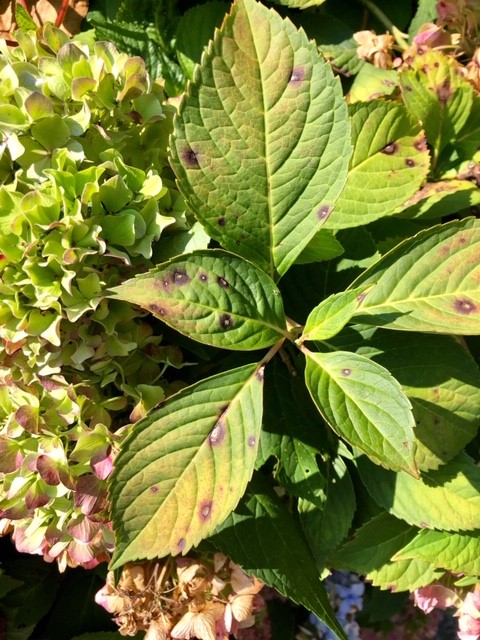Things about Hydrangea Leaves Turning Yellow
Table of ContentsThe smart Trick of Hydrangea Leaves Turning Yellow That Nobody is Talking AboutHydrangea Leaves Turning Yellow Fundamentals ExplainedEverything about Hydrangea Leaves Turning YellowHydrangea Leaves Turning Yellow - The Facts
One possibility is that the plant is not obtaining enough sunlight. During the winter months, the days are much shorter, and the sunlight is not as extreme, so make certain to position your Hydrangea in a spot where it will get at least six hours of sunlight each day. Another reason for Hydrangea yellow fallen leaves in winter can be as well much water.Lastly, the leaves may be turning yellow due to temperature stress and anxiety. Hydrangeas like cooler temperature levels, so if the plant remains in a spot that gets too hot or too cold, the leaves will transform yellow. If you think temperature level anxiety could be the problem, attempt moving your Hydrangea to a different place or shielding it from the components with a burlap wrap
New growth will certainly be observed in early springtime, when you'll observe eco-friendly foliage sprouting from stems that could have shown up dead. If your leaves are turning brown in springtime or summertime, there are most likely other elements at play. The specific reasons rely on the range and their expanding problems, but in basic, brownish hydrangea leaves signify dehydration and wilting in the warm.
In the spring when the mercury remains relatively reduced, they'll do great. When things warm up over the summer season nevertheless, time invested in the early mid-day rays can create unimaginable damage.: Expand your hydrangeas in a spot where they'll obtain sunlight in the mornings or nights, however not throughout the peak hours.
The 20-Second Trick For Hydrangea Leaves Turning Yellow
Wilting is triggered by absence of wetness, suggesting there are a couple of great tricks to use to avoid this from occurring. Provide your hydrangeas a healthy glug of water every few days when the temperatures are climbing high, and deal with the soil to better preserve dampness. Hydrangea Leaves Turning Yellow. After watering, a bit of mulch around the base of each plant should assist with this by keeping wetness in the dirt
This disrupts fungis spores from resolving. "The Botrytis fungi prospers in great and wet conditions, so avoid bathing the entire plant when watering and just water at the origins," shares Roy Nicol, a Master Horticulturist. If you have actually missed out on the chance for prevention and are taking care of an infection you should get rid of all dead or severely infected fallen leaves from the plant and destroy them to stop more spread.
As a basic guideline, we recommend getting rid of fallen leaves when they are 50% brownish or higher. While browning brought on by any type of factor can't be reversed, taking the rehabilitative activity described above will encourage useful content the plant to expand brand-new leaves so the harmed leaves either fall off naturally or can be eliminated by the gardener.
Hydrangeas must be sprinkled only when the top couple of inches of dirt are completely dry, and must be offered a complete saturating each time. Underwatered hydrangeas are important site most likely to have yellow, wilting, and sagging fallen leaves. Increase the regularity and quantity of sprinkling for your shrub to aid fix this issue. Hydrangeas choose rather damp (however not soggy) dirt, so offer the origins a great saturating and permit water to be soaked up right into the dirt prior to using more.
Hydrangea Leaves Turning Yellow - Truths
The way you fix hydrangea leaves transforming yellow relies on the vital problem creating the yellow leaves. This can be hard to establish, yet once you do you will be able to change your plant care accordingly to look after the issue. As mentioned previously, a common issue with hydrangeas is nutrient deficiencies.

You can acquire and mount straightforward watering worlds. Watering worlds hold water in them and slowly release this water right into the dirt as the ground becomes dry. Simply load the world with water, stick the spout right into the dirt within the root area near the base of the plant, and leave it in position up until all the water is gone.
A Biased View of Hydrangea Leaves Turning Yellow
To prevent spreading fungal diseases, make certain to thouroughly clean and decontaminate any type of pruning tools before and after usage (Hydrangea Leaves Turning Yellow). You can attempt to flush the origins with water to remove excess fertlizer.
Your hydrangea plant likes well-drained, damp soil. If the pot has poor drainage, or your dirt is flooded, the fallen leaves will start to transform yellow.
If you don't sprinkle your hydrangea plant for even more than a week, the leaves will start turning yellow. Fungal conditions that strike the plants have a tendency to show indicators on the roots and the leaves of the plant.
Root rot occurs when pathogens occupy the origin cells as hosts and quit the cell from operating. If not looked after, this condition can ultimately lead to the plant dying. Leaf area is another fungal illness that can target hydrangea. It leads to the fallen leaves turning yellow and the look of brownish and purple spots on the fallen leaves.